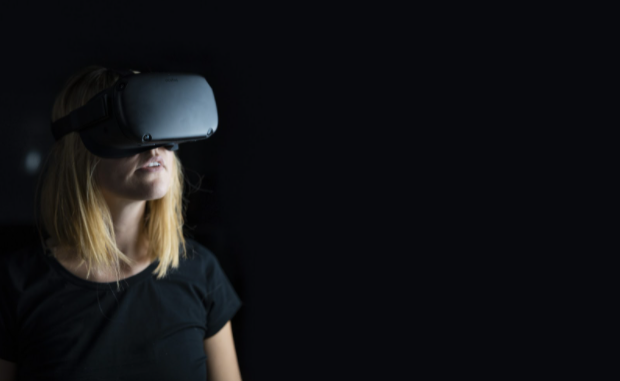Brace Yourself for More AR and VR in Business
- Marc Primo

- Jun 25, 2021
- 4 min read
This is an article “Brace Yourself for More AR and VR in Business” by Marc Primo
Perhaps the biggest news in both virtual reality (VR) and augmented reality (AR) in the past year is how COVID-19 changed our views about everything. With many of us stuck at home, the next best thing is to find other ways to travel and experience something new. Enter VR headsets.

The number one VR headset on the market today, Facebook’s Oculus Quest 2 shot up in sales with over 1 million units sold in the fourth quarter of 2020 and steadily continues its upward trajectory, according to SuperData. Somehow, this gives us the impression that such modern digital landscapes could be potential ground for more innovative marketing and business avenues in the near future.
You may ask what these artificial realities have to do with business. Unless you’ve put on an Oculus Quest 2 or any other VR headset, you might not have the faintest idea–-but it’s big. Today, more companies are investing in giving consumers innovative marketing experiences including VR and AR. The academic sector has already taken great strides in pushing the envelope on digital and remote learning, and with a growing eCommerce demand, who’s to say that VR and AR have no place in modern business?
What are VR and AR?
Understanding the difference between VR and AR is not that difficult. Knowing what each can do for businesses, however, may still be uncharted waters for most entrepreneurs.
In a nutshell, VR is simply any type of technology that takes the elements of visual three-dimensional (3D) environments to produce computer-generated simulations for more immersive experiences, while AR integrates what we see as reality with similar visual elements to morph what we perceive of reality.
To understand both realities’ distinction, VR may require more tools like headsets, haptic gloves, omnidirectional treadmills, and controllers; while all you’ll need to experience AR can be as simple as your smartphone which can help make a real-life setting more virtual (though more developments have also been achieved to include more AR gadgets into the mix). You mostly control what happens in AR while you are often dependent on a system, its elements, and environments while immersed in VR.
By taking these modern technological concepts and integrating them into business models, companies can discover new ways to engage their target markets and offer their products. This year, both the VR and AR markets are expected to reach nearly $100 billion in the next five years, owing to how industries are currently taking a closer look at its promising potentials.
How modern tech improves work, environments, and performance
With many consumers trying out VR headsets like the Oculus Quest 2 which has already enabled hand tracking, developers continue to create innovations in body-tracking technologies that now include facial expressions, gestures, and eye movements. The latest updates in the VR world are currently seeing fast-paced progress in tracking technology that the possibility of users being able to walk, run, and jump physically can also be simulated within a virtual world may just be at hand.
In the meantime, companies are looking at tracking technology to improve their privacy and security features, as well as consumer engagement. Virtual apps such as Venues and MelodyVR can now sell tickets to users virtually for VR entertainment and specials including concerts, comedy shows, and the like while productivity tools like Gravity Sketch and Collab Hub enable remote collaboration among individuals within the VR space.
It also has been established how VR and AR greatly help industrial engineers do their work from initial design to assembly optimization or how they prove to be good investments that save both time and money for the long term. Design alterations can be done in real-time with minimal risks or consequences, and rendering 3D prototypes saves a lot of money before mass production.
Designers, engineers, executive decision-makers, and even clients can iterate on designs in real-time. Plus, having a virtual, 3D prototype can cut the time, money, and materials needed to create a series of physical prototypes.
With more developers working to create virtual working environments that get the jobs done faster and with more convenience, VR and AR may just be the future of work as we know it.
What AR and VR can do for small businesses
In terms of brand engagement, virtual technologies have also served as marketing and sales tools that enable companies to reach over 3.5 billion smartphone users for their campaigns. Visual imaging filters or interactive stickers like those on Snapchat or Instagram are now widely used by companies for their products to boost traffic on social media. And who can forget how Pokémon Go introduced all of us to the magic of AR?
This type of engagement and marketing can increase a retail company’s sales or brand identity significantly as businesses that sell furniture (Ikea), paint (Dulux), clothing (Uniqlo), and beauty products (Sephora), among others, did so in their respective campaigns.
Small businesses can get in on the action by simply being creative and partnering with developers for their marketing campaigns which users can access via their headgear sets or even on their smartphones. AR tools such as Augment and Snapchat’s Lens Studio allow you to transform 2D images into more compelling 3D visuals and generate front and rear camera experiences respectively.
For more immersive VR experiences, smaller businesses can simulate theme park rides, escape rooms or flying schools into 360-degree experiences that can give them a hint of what they are in for before making a purchase. And consumers appreciate this type of VR marketing strategy that can increase brand recall and also gain positive word-of-mouth from consumers who have tried them.
With over 68 million virtual headsets sold in total as of 2020, plus over 12 million more projected this year and more innovations coming our way, global consumers may continue to shift towards a new form of online marketplace that’s more convenient and personalized. Saying business will soon become out of this world (literally) is truly an understatement nowadays, but there’s no denying that both VR and AR are surely one of the best ways to go for today’s entrepreneurs.








Comments